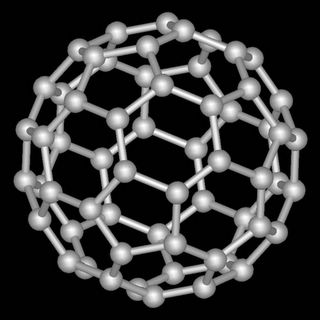Alternative Way of Reversing Mutations discovered
A huge step forward in Genetics is made. Scientists found plants that could repair their genetic code to a valid and healthy string despite the fact that both parents had a mutated and invalid version of this DNA sequence. That breaks one of the oldest principles in Genetics: Gregor Mendel (1822-1884), an Austrian monk found out before DNA was discovered that inheritance in plants followed a certain sheme and postulated
Mendel's Laws of Inheritance. It essentailly means that children inherit the characteristics, also called
phenotypes, of their parents. That is determined by statistics. Since many organisms have 2 parents and are homozygous, they inherit 2 versions of a DNA sequence, 1 from each parent. Now these sequences are also called alleles and one of them defines the current caracteristics of the creature. It is therefore called the dominant allele. You can say that of 10 children all will have the DNA of Father eg. FF3 and Mother MM -> FM. The second Generation of children may contain the gene combinations MM MF FM FF, each of the groups equally distributed, or in case of a dominance, biased for example 3:1:1.
Now the sensation: Dr. Robert Pruitt, Dr. Susan J. Lolle have found a plant called arabidopsis that can recreate a valid DNA Sequence without having a backup copy in form of a rececessive but valid DNA sequence. So what really happened was not conforming to Medels Law nor to our understanding of how DNA and even Evolution itself works. The plant had MF from mother and father but it changed it to UM with U as a new and unknown DNA segment. How did it do it ? It is possible that cells have a method for keeping an additional backup copy of the prcious information as RNA or maybe even a way of reverse engineering the DNA Sequence from the produced proteins. We have cartographed 100% of the Human DNA and many other organisms. But there is still a much larger set of proteins to be categoriezed and mapped. It is widely unknown which information they share or even their exact function. However we know that you cannot simply take the DNA alone and recreate a working cell from it. When I would create a DNA sequence, i would implement a hierarchical set of backups distributed over several layers. Or at least create checksums at regular intervals and in larger and larger areas. It is not to be excluded that a similar error correction system works in cells and stores its checksums in the so-called Junk-DNA ( Another word for "I have no idea what that's for.")
Dr. Robert Pruitt, Dr. Susan J. Lolle and other genetics from Purdue University published their results in
Nature.
Startling Scientists, Plant Fixes Its Flawed GeneBy NICHOLAS WADE
Published: March 23, 2005
"In a startling discovery, geneticists at Purdue University say they have found plants that possess a corrected version of a defective gene inherited from both their parents, as if some handy backup copy with the right version had been made in the grandparents' generation or earlier.
The finding implies that some organisms may contain a cryptic backup copy of their genome that bypasses the usual mechanisms of heredity. If confirmed, it would represent an unprecedented exception to the laws of inheritance discovered by Gregor Mendel in the 19th century. Equally surprising, the cryptic genome appears not to be made of DNA, the standard hereditary material."
"The result, reported online yesterday in the journal Nature by Dr. Robert E. Pruitt, Dr. Susan J. Lolle and colleagues at Purdue, has been found in a single species, the mustardlike plant called arabidopsis that is the standard laboratory organism of plant geneticists. But there are hints that the same mechanism may occur in people, according to a commentary by Dr. Detlef Weigel of the Max-Planck Institute for Developmental Biology in Tübingen, Germany. Dr. Weigel describes the Purdue work as "a spectacular discovery."
"The finding grew out of a research project started three years ago in which Dr. Pruitt and Dr. Lolle were trying to understand the genes that control the plant's outer skin, or cuticle. As part of the project, they were studying plants with a mutated gene that made the plant's petals and other floral organs clump together. Because each of the plant's two copies of the gene were in mutated form, they had virtually no chance of having normal offspring."
"But up to 10 percent of the plants' offspring kept reverting to normal. Various rare events can make this happen, but none involve altering the actual sequence of DNA units in the gene. Yet when the researchers analyzed the mutated gene, known as hothead, they found it had changed, with the mutated DNA units being changed back to normal form."
"Dr. Pruitt and his colleagues argue that a correct template must exist, but because it is not in the form of DNA, it probably exists as RNA, DNA's close chemical cousin. RNA performs many important roles in the cell, and is the hereditary material of some viruses. But it is less stable than DNA, and so has been regarded as unsuitable for preserving the genetic information of higher organisms."
"Dr. Pruitt said the backup genome could be particularly useful for self-fertilizing plants, as arabidopsis is, since it could help avoid the adverse effects of inbreeding. It might also operate in the curious organisms known as bdelloid rotifers that are renowned for not having had sex for millions of years, an abstinence that would be expected to seriously threaten their Darwinian fitness."
Technorati Tags: DNA, Mutation, Biology, Mendel, Evolution, Inheritance, Nature
 Picture Origin: Wikipedia GNU GPL
Picture Origin: Wikipedia GNU GPL
